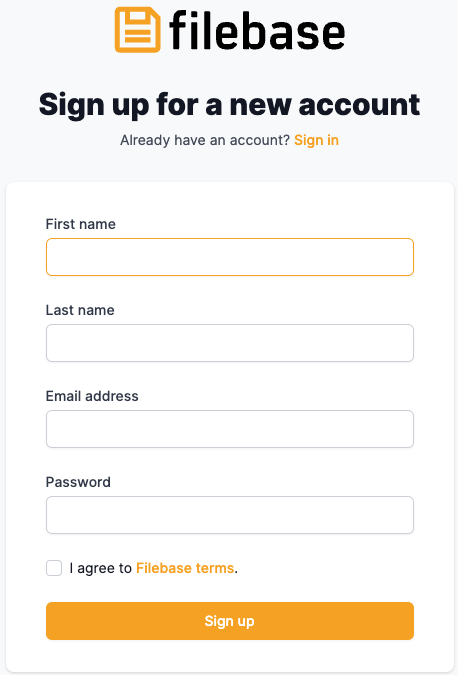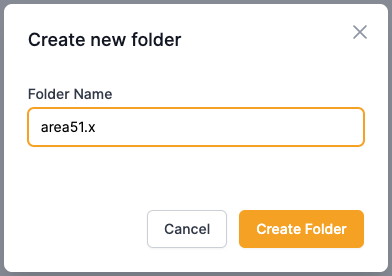If you want to upload a website over the 20 MB limit on our site or if you would just like some more control over your files you can upload your website directly to Filebase and link the IPFS hash (CID) to your domain.
You can sign up for Filebase here.

When you have gone through the sign-up process and confirm your email you will be able to log into your dashboard. Filebase has a handy tutorial when you first login that will show you the platform and its features.

Before you upload any files you will first need to create a bucket by clicking on Buckets on the left-hand side of the screen.

Now click Create Bucket in the top right-hand corner.

You will need to enter a unique name for your bucket. Make sure Storage Network is set to IPFS (Always public) otherwise no one will be able to see your site!

Once the bucket is created click on the bucket's name to start adding your files.

In here, you can create folders if you want to separate your files or upload them straight to the bucket. Both of these options are in the top right-hand corner. It is best to create a new folder for each of your domains and name it with the domain name so you can keep track of your site.


When you have your folder created click on the folder name.

Now click Upload in the top right-hand corner.

Now you have a few options:
- Folder
- File
- CID

If you have multiple website files such as multiple pages, CSS files, asset folders etc. you will want to select Folder. You will need up upload the folder containing the files.
If your site is a single page with no other files choose File.
If you have your files pinned to IPFS already and you would like them pinned to Filebase also select CID and enter the IPFS hash (CID).
Once you have selected your file(s) or entered an existing IPFS hash you will be taken back to the folder.

You can now click the copy button next to the hash to copy it to your clipboard.

Once you have the hash copied you can follow our guide here to link the hash to your domain.
If you want to upload a website over the 20 MB limit on our site or if you would just like some more control over your files you can upload your website directly to Filebase and link the IPFS hash (CID) to your domain.
You can sign up for Filebase here.

When you have gone through the sign-up process and confirm your email you will be able to log into your dashboard. Filebase has a handy tutorial when you first login that will show you the platform and its features.

Before you upload any files you will first need to create a bucket by clicking on Buckets on the left-hand side of the screen.

Now click Create Bucket in the top right-hand corner.

You will need to enter a unique name for your bucket. Make sure Storage Network is set to IPFS (Always public) otherwise no one will be able to see your site!

Once the bucket is created click on the bucket's name to start adding your files.

In here, you can create folders if you want to separate your files or upload them straight to the bucket. Both of these options are in the top right-hand corner. It is best to create a new folder for each of your domains and name it with the domain name so you can keep track of your site.


When you have your folder created click on the folder name.

Now click Upload in the top right-hand corner.

Now you have a few options:
- Folder
- File
- CID

If you have multiple website files such as multiple pages, CSS files, asset folders etc. you will want to select Folder. You will need up upload the folder containing the files.
If your site is a single page with no other files choose File.
If you have your files pinned to IPFS already and you would like them pinned to Filebase also select CID and enter the IPFS hash (CID).
Once you have selected your file(s) or entered an existing IPFS hash you will be taken back to the folder.

You can now click the copy button next to the hash to copy it to your clipboard.

Once you have the hash copied you can follow our guide here to link the hash to your domain.